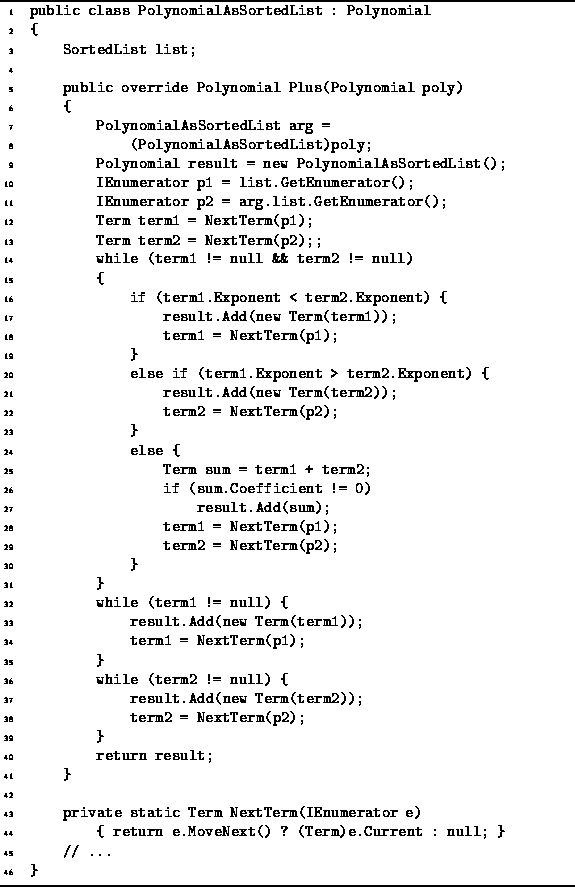|
Data Structures and Algorithms
with Object-Oriented Design Patterns in C# |
To begin with, we need to represent the terms of the polynomial.
Program ![]() extends the definition of
the Term class introduced in Program
extends the definition of
the Term class introduced in Program ![]() --some additions are needed to support the
the implementation of polynomial addition.
--some additions are needed to support the
the implementation of polynomial addition.
Four additional operations are declared in Program ![]() .
The first is a constructor which creates a copy of a given term.
The next two properties, Coefficient and Exponent,
provide get accessors
that return the corresponding fields of a Term instance.
Clearly, the running time of each of these operations is O(1).
.
The first is a constructor which creates a copy of a given term.
The next two properties, Coefficient and Exponent,
provide get accessors
that return the corresponding fields of a Term instance.
Clearly, the running time of each of these operations is O(1).
The final method, operator+, provides the means to add two Terms together. The result of the addition is another Term. The working assumption is that the terms to be added have identical exponents. If the exponents are allowed to differ, the result of of the addition is a polynomial which cannot be represented using a single term! To add terms with like exponents, we simply need to add their respective coefficients. Therefore, the running time of the Term addition operator is O(1).
We now turn to the polynomial itself.
Program ![]() introduces
the PolynomialAsSortedList class.
This class implements the Polynomial interface
defined in Program
introduces
the PolynomialAsSortedList class.
This class implements the Polynomial interface
defined in Program ![]() .
It has a single field of type SortedList.
We have chosen in this implementation to use
the linked-list sorted list implementation
to represent the sequence of terms.
.
It has a single field of type SortedList.
We have chosen in this implementation to use
the linked-list sorted list implementation
to represent the sequence of terms.

Program: PolynomialAsSortedList class Plus method.
Program ![]() defines the Plus method.
This method adds two Polynomials to obtain a third.
It is intended to be used like this:
defines the Plus method.
This method adds two Polynomials to obtain a third.
It is intended to be used like this:
Polynomial p1 = new PolynomialAsSortedList(); Polynomial p2 = new PolynomialAsSortedList(); // ... Polynomial p3 = p1 + p2;